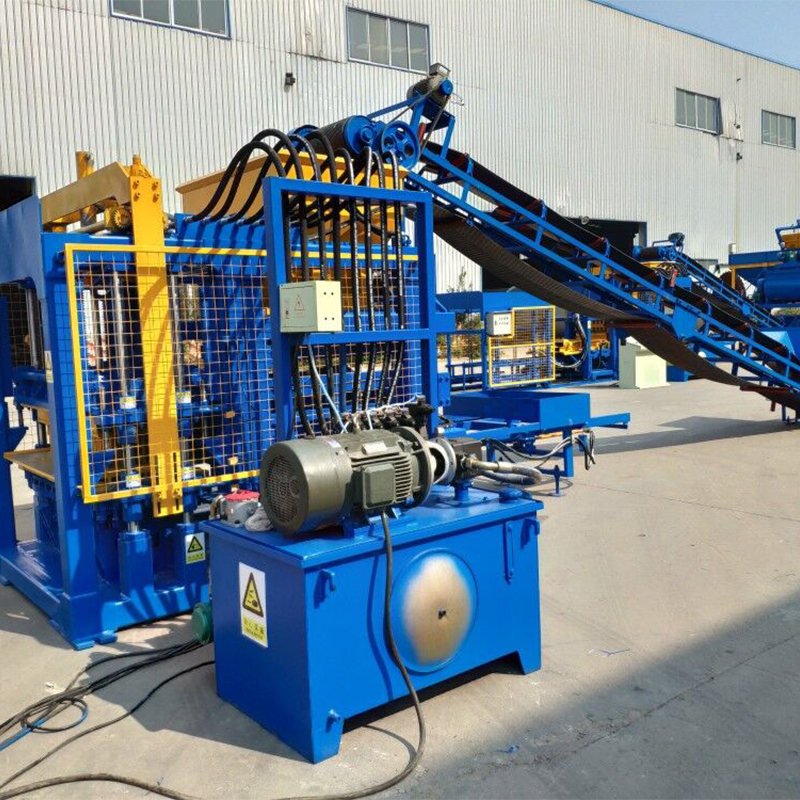
Image source Aiweibrickmachine
Incorporating Voice and Gesture Control in Full-Automatic Machine Interfaces
Title: Revolutionizing Interfaces: Integrating Voice and Gesture Control in Full-Automatic Machine Interfaces
Introduction
As the manufacturing landscape embraces automation and smart technologies, the integration of intuitive and hands-free interfaces becomes pivotal. In the realm of full-automatic block production, incorporating voice and gesture control in machine interfaces offers a transformative leap towards enhanced operational efficiency, user experience, and safety. This article explores the potential and strategies for integrating voice and gesture control in full-automatic machine interfaces.
1. **Enhanced User Experience through Voice Commands**
Voice control brings a new dimension to user-machine interaction by allowing operators to command and control full-automatic machines using natural language. By incorporating robust voice recognition systems, machine interfaces can respond to verbal commands for various functions, such as starting or stopping the production line, adjusting settings, or querying machine status. This hands-free interaction reduces the need for physical inputs, streamlining the user experience and minimizing the learning curve for operators.
2. **Reduced Downtime with Voice-Activated Maintenance**
Voice control can extend beyond operational commands to facilitate maintenance tasks. Operators can use voice commands to initiate diagnostic checks, request maintenance support, or receive real-time updates on machine health. This proactive approach to maintenance can help identify issues early on, reducing downtime and preventing potential disruptions to the production process. Integrating voice-activated maintenance features empowers operators with a more efficient and responsive means of managing machine health.
3. **Gesture Control for Intuitive Machine Manipulation**
Gesture control introduces a hands-free and intuitive method of interacting with full-automatic machines. By utilizing cameras and sensors, machine interfaces can recognize and interpret gestures made by operators. This allows for intuitive control of machine functions, such as adjusting parameters, navigating menus, or initiating specific actions. Gesture control is particularly beneficial in scenarios where direct physical interaction with the machine may be impractical or unsafe.
4. **Safety Enhancements with Hands-Free Operation**
Incorporating voice and gesture control contributes to improved safety on the manufacturing floor. Hands-free operation minimizes the need for operators to physically engage with control panels or input devices, reducing the risk of accidents and injuries. Voice commands and gestures can be used to initiate emergency stop procedures or convey critical information without the need for manual intervention, enhancing overall safety protocols.
5. **Adaptive User Interfaces for Varied Work Environments**
Full-automatic block production environments can vary significantly, and a one-size-fits-all approach may not be optimal. Adaptive user interfaces, driven by voice and gesture control, enable customization based on the specific requirements of different work environments. Operators can interact with the machine in a manner that suits their preferences and the demands of the production setting, fostering flexibility and accommodating diverse operational needs.
6. **Integration with IoT for Seamless Connectivity**
Voice and gesture control interfaces can seamlessly integrate with the Internet of Things (IoT) ecosystem. This connectivity enhances the capabilities of full-automatic machines by enabling them to communicate with other devices and systems in real-time. For example, operators can use voice commands to access data analytics or receive alerts on their mobile devices, ensuring a holistic and connected approach to machine management.
7. **User Training and Onboarding with Interactive Guidance**
Voice and gesture control interfaces can play a crucial role in user training and onboarding processes. Interactive guidance systems can use these interfaces to provide real-time instructions and tutorials to operators. This not only facilitates quicker and more effective training but also ensures that operators can confidently and accurately interact with the machines using intuitive commands and gestures.
8. **Continuous Improvement through User Feedback Analysis**
Voice and gesture control interfaces can be designed to collect user feedback on the effectiveness and ease of interaction. Machine learning algorithms can analyze this feedback to identify areas for improvement and optimization in the interface design. Continuous refinement based on user input ensures that the interface evolves to meet the changing needs and preferences of operators over time.
Conclusion
Incorporating voice and gesture control in full-automatic machine interfaces represents a leap towards a more intuitive, efficient, and safer manufacturing environment. By harnessing the power of natural language and non-intrusive gestures, these interfaces empower operators with hands-free control, streamlined maintenance processes, and enhanced safety features. As technology continues to advance, the integration of voice and gesture control stands as a testament to the ongoing commitment to creating smart and user-friendly interfaces that redefine the future of full-automatic block production.
